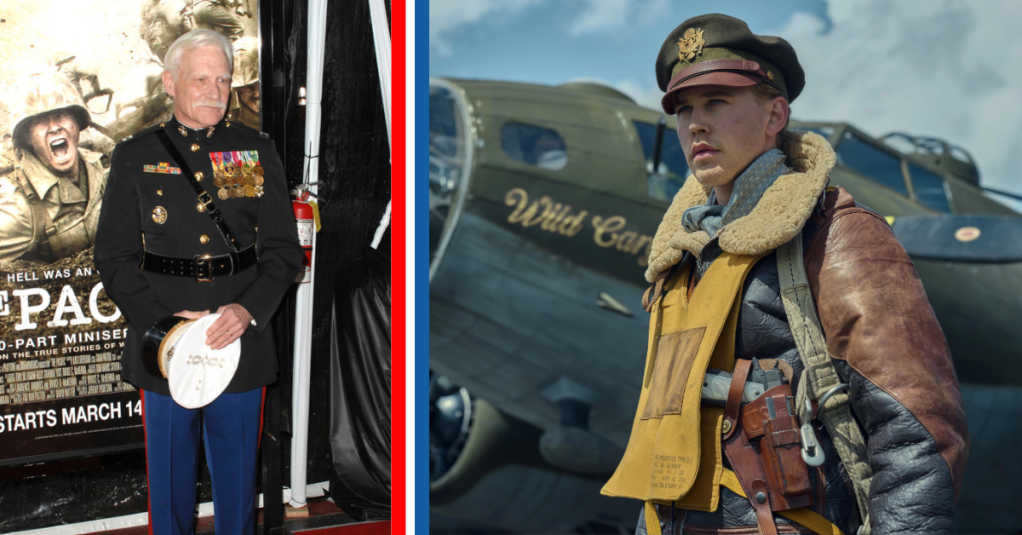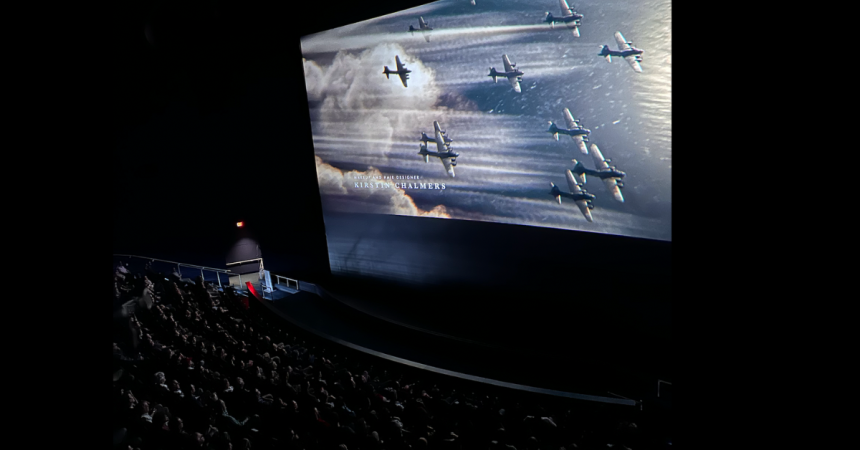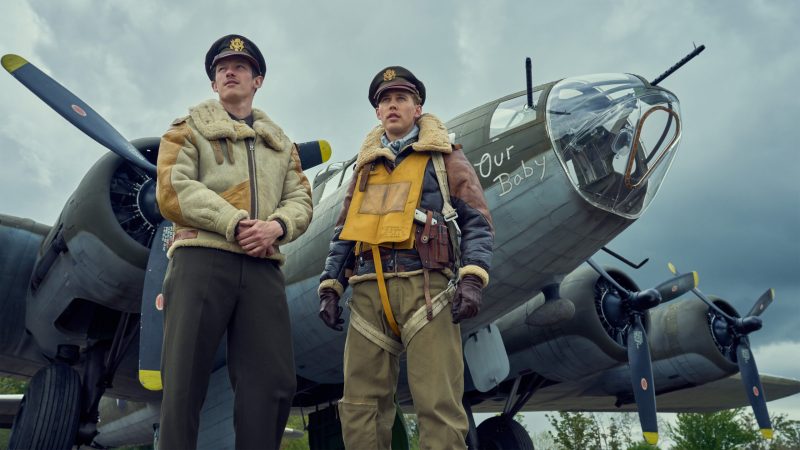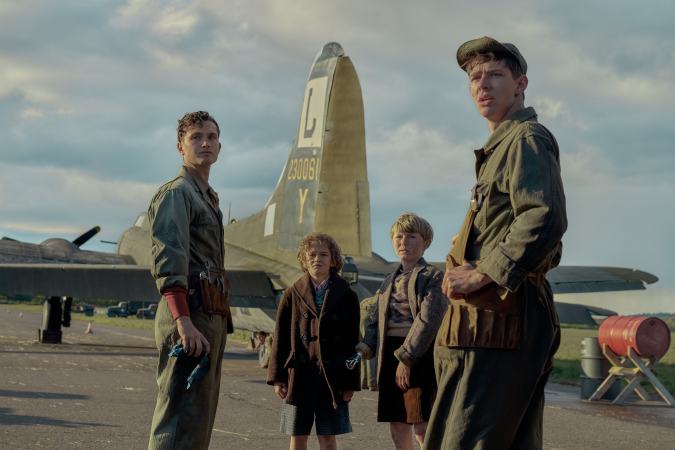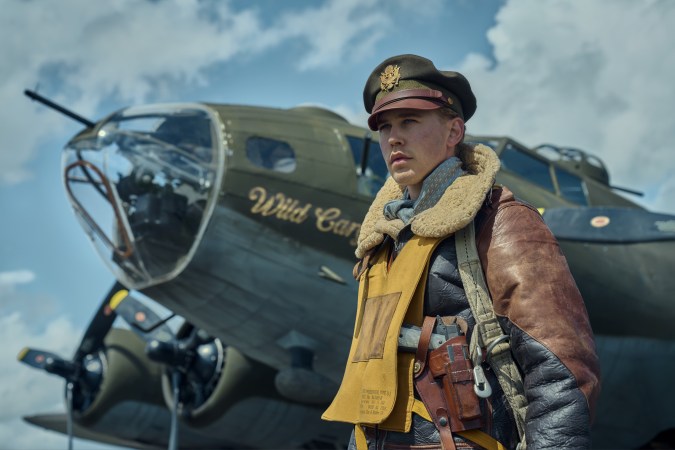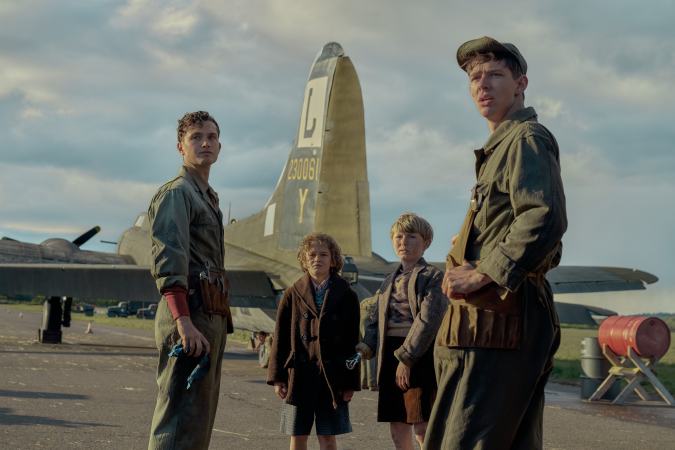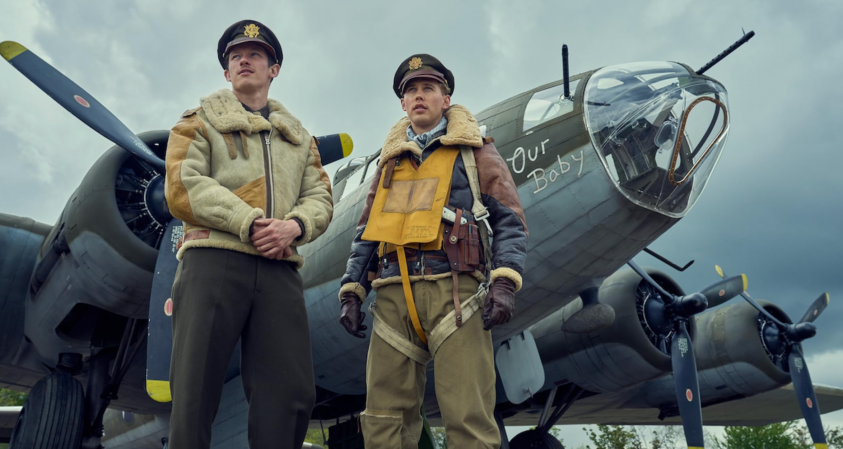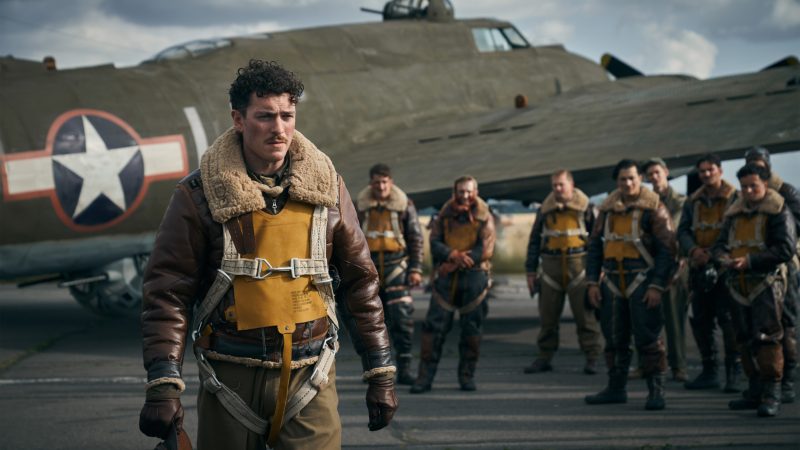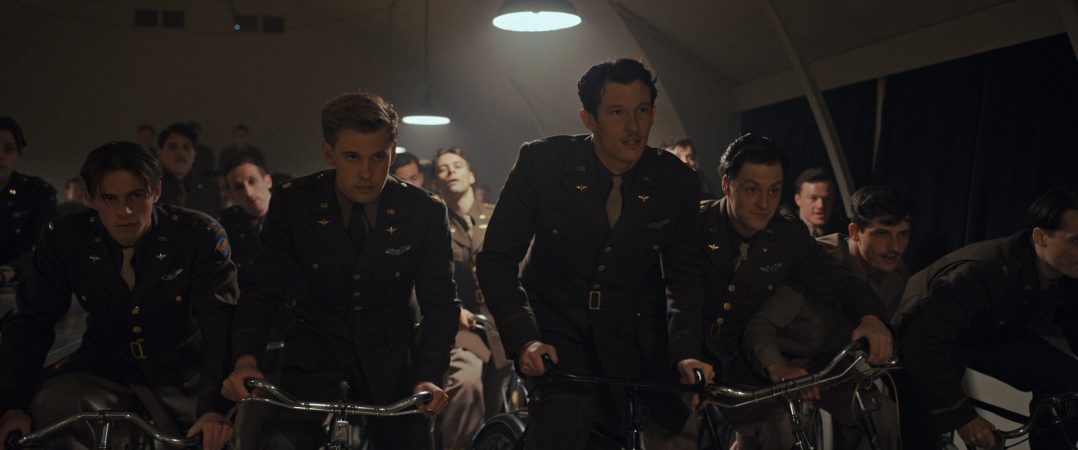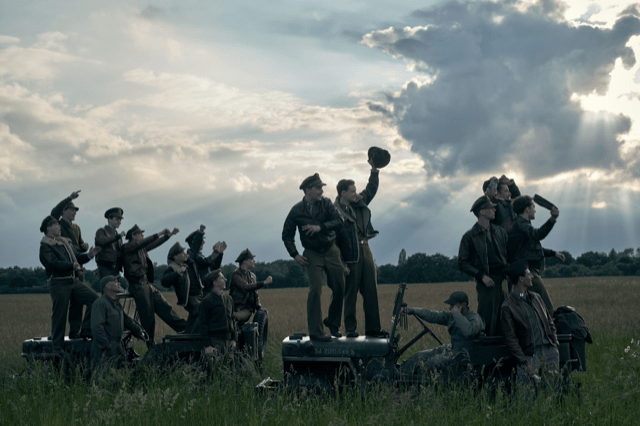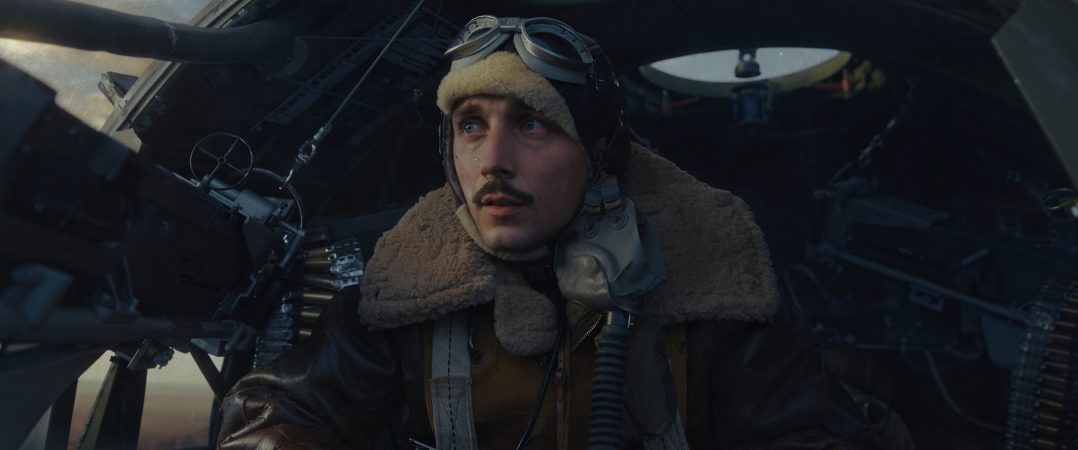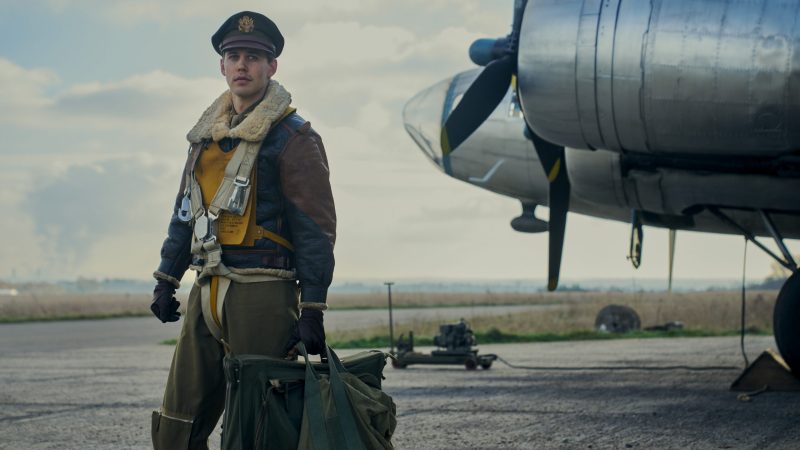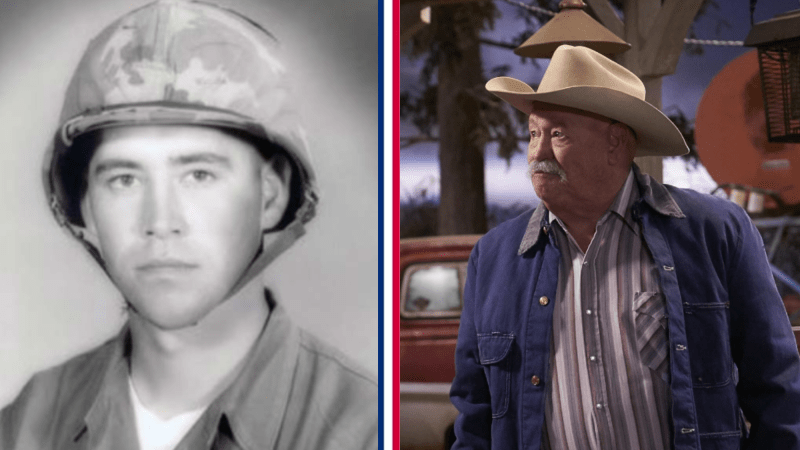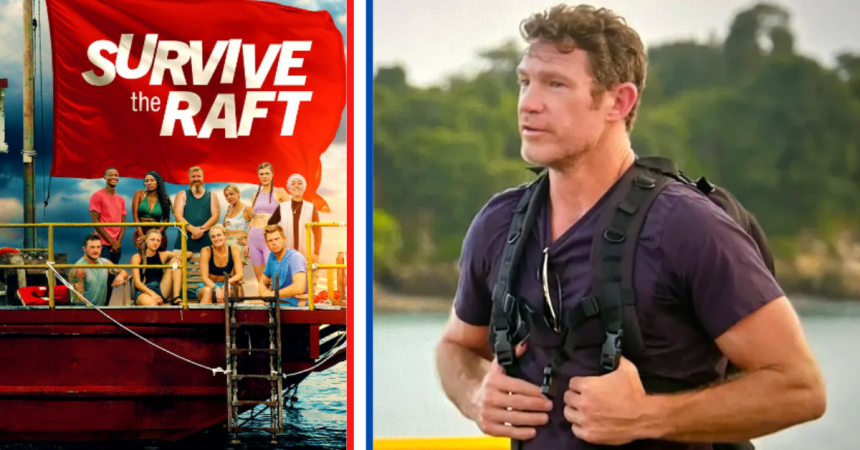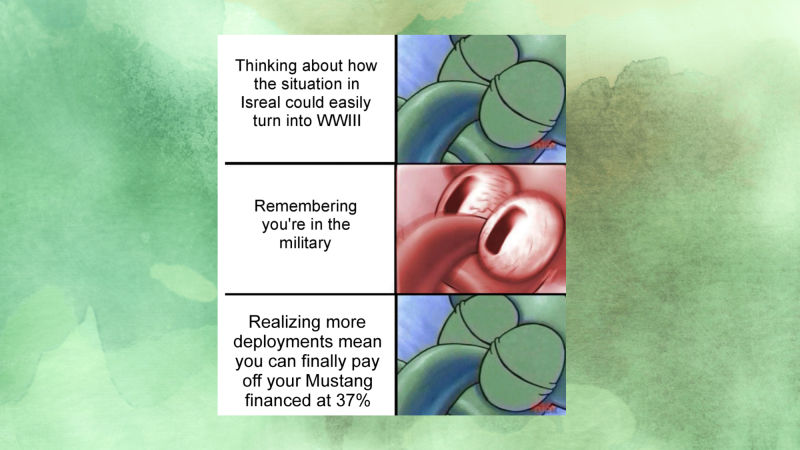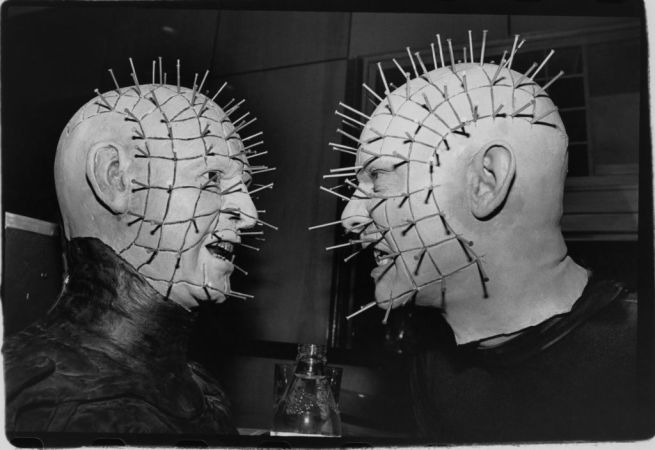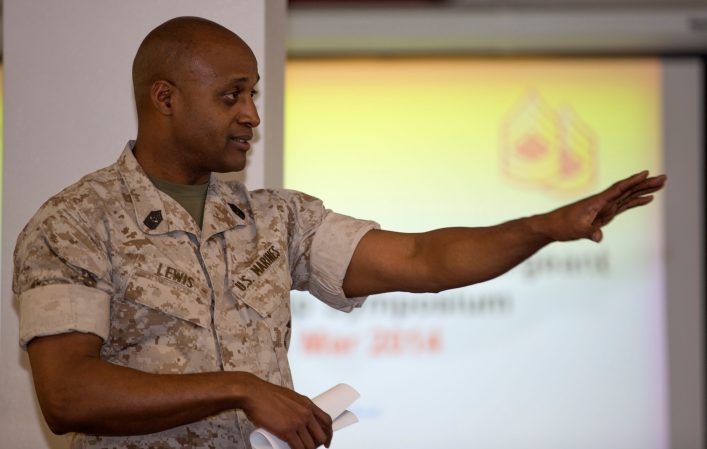Captain Dale Dye is known to audiences around the world for his military advising and acting work in some of the greatest military films and series of all time. He is most notably known for his work on Platoon, Saving Private Ryan, Band of Brothers, The Pacific, Last of the Mohicans, Starship Troopers, JFK, Greyhound, Tropic Thunder, Casualties of War and Mission: Impossible. He is known for his long-time collaborations with Steven Spielberg, Oliver Stone and Tom Hanks. Dye has appeared on popular TV shows such as JAG, Las Vegas, Chuck, Cold Case and Falling Skies. He also worked on the Medal of Honor game series. Most recently he has collaborated yet again with Spielberg and Hanks on the Masters of the Air series.
WATM sat down with Capt. Dye to talk about his incredible career and his latest project.

WATM: Can you tell us about your experience?
Capt Dye: I’m probably the most interviewed guy these days of anybody in the cast. Masters of the Air is a great project and it’s becoming a mega-hit, which is great. I’m glad to talk about it. Steven’s (Spielberg) father was a B-25 aircrewman in the Pacific Theater (during WWII). He’d always been getting at his son Steven – We get it about Band of Brothers. We get it about The Pacific, but when are you going to do the Air Corps? I guess Steven had had enough of that and he finally got together with Tom Hanks. “Alright, we’re gonna do the third part of the trilogy, it’s gonna be Band of Brothers, The Pacific and now Master’s of the Air.” So, as usual, they called me and said, “Look, it’s time to train these people,” and I said, “Look, none of my guys are aviators.” They said, “You think it over because you’ve got to train these people or the actors will revolt. They’ve all heard about Capt Dye’s training methods. So you’ve gotta get up there and do this.”

So we took a look at it and fortunately, we had a couple of guys on call that were B-17 experts, one Brit and one American. We folded them into the military department right quickly. But when we got to figure out how we were going to do this, the philosophy was this, if you’re a young guy and you join the Army or you’re drafted into the Army in the 1940s and WWII, you soldier before you aviate. So we said, “Look, here’s what we’ll do, we’ll train them to be soldiers first, and then we’ll gradually in a crawl, walk, run process, we’ll get them up into being B-17 crewmen. And that’s how we approached it. We had about 12-14 days. As usual, I got their attention with heavy PT, which is my classic deal. We did some enormous research. I think we read every memoir of a B-17 crewman there was, we read every WWII monograph and every WWII training manual we could get our hands on and we designed this training syllabus. We had upward of 50-60 actors every day, but we noticed there was one thing missing.
Usually, we have them for 24 hours when we train them. We have them fully immersed. We own them. They live in a barracks with us. Or they live in the field with us. But this time the production couldn’t afford that. They said we will give them to you for 12 hours a day….there were a lot of them, it wasn’t a four or five man cast, it was 50 to 60 actors a day. My self and my executive officer Mike Stokey, we said, “Look this really actually plays into our hands. Because the truth of the matter is, that a B-17 crewman flying over Nazi-occupied Europe in the 8th Air Force in WWII flew in eight to 10-hour leg in combat and if he got home, he was back in sort of a garrison life…” So, I said, ‘Let’s play to that, let’s play to that as a strength, we’ll train them for eight to 12 hours a day. Make it tough on them, flood them with information and let them go. Then they have to come back the next morning. We put them in the mindset of the 8th Air Force air crewman in those days.’ I think it worked out well.
The special effects are the star of the show. They are jaw-dropping what you see going on. They spared no expense. They made two full-scale B-17s. Like a remote-controlled car, we could taxi around the runway. We were in those things constantly. The thing about it was when you were inside that aluminum tube, it looks huge from the outside, it is cramped and tiny on the inside, especially when you are in the gunner’s position. When you are in there you are surrounded and used to a green screen; well in this case, a device that literally surrounded these aircraft parts on gimbals, rather than just looking, the computers would be tuned to show the actors what they should be seeing. I have no idea how any of it worked…we had to be at the Director of each episode’s elbow to make sure it was correct. It was a 10 and a half month shoot, so it was a long shoot. We went through a British winter. In the end we produced a nice piece and the audience reaction has been tremendous.

You can’t say enough about the wardrobe people and the props people and the set design people, they were magic. They did research that was absolutely grinding. They always had it there for us. If you never flew in WWII as a B-17 crewman, it is hard to believe how much gear they wore and 10,000 feet, it is all eye-acting because you have this oxygen mask. How cramped, how difficult and how ice cold it was flying these bombers above 10,000 feet. How deadly it was. The statistics about surviving are stunning, especially about how many were lost. You’d get in that aircraft [knowing this], this is what we tried to train these guys about, it’s hard to put that person in that sort of mindset. These were the guys engaged in the biggest crap shoot in the war. These guys got in the plane knowing the odds were against them to survive…it was an intense effort to make them [the actors] understand they were playing people who had that sort of patriotism. That sort of courage. That sort of tenacity.
Much of our training and reminders throughout the shoot was to say, ‘These are all real guys. All you gotta do is read Don Miller’s book Masters of the Air. These are all real characters and you are under an obligation to portray them correctly. You have to understand that tenacity, that courage and that patriotism.’ Whether there will be a fourth part of this series I am not sure. There certainly could be with the audience reacting the way they have been. We just have to find something. We would look to do the Navy this time. It looks like we are bound for the Navy. Given what Tom and I have done on a film called Greyhound, we might make it a quad-part, than a three-part trilogy (Band of Brothers, The Pacific and Masters of the Air). We’ll see what happens.

There were only a few (survivors of WWII who served in the Army Air Corps), just a handful left and we saw some of them when we were doing a premiere in LA. There were three of them in their 90s. Some of them were able to talk to us and give us a hint. Don Miller’s book was kind of the Bible – any time where you do WWII in the air.
WATM: What was your biggest challenge in filming?
It’s tough to do that story visually…we got some spectacular stuff. Every day we found ourselves moving around portions of fuselage around on gimbals and then surrounding this green screen that projects computer-generated imagery; watching technicians getting it all synced was magic. You could see it happen right then and weren’t waiting for dailies. It was right there. We had some spectacular stunts…in the end, it paid dividends…



